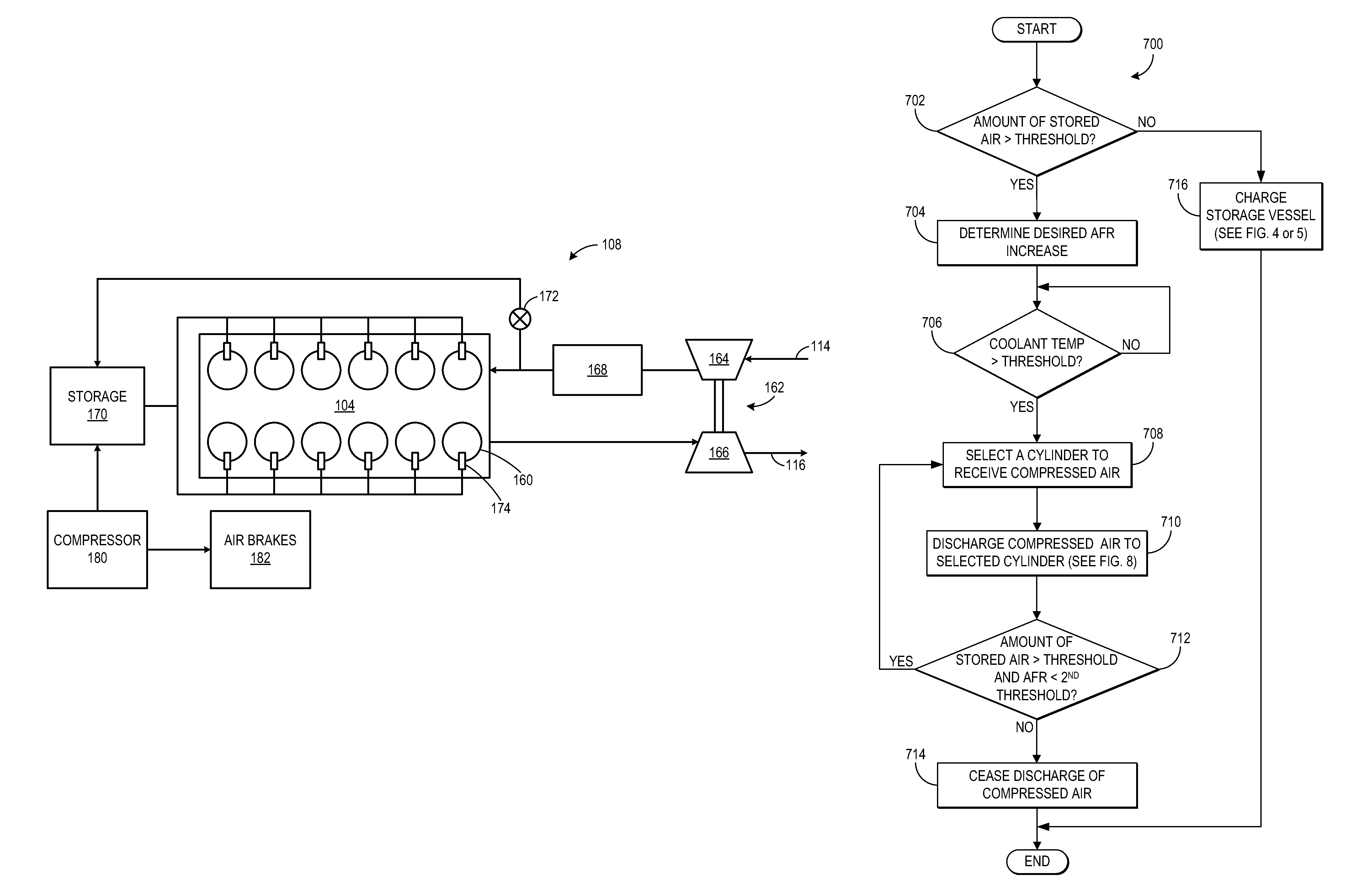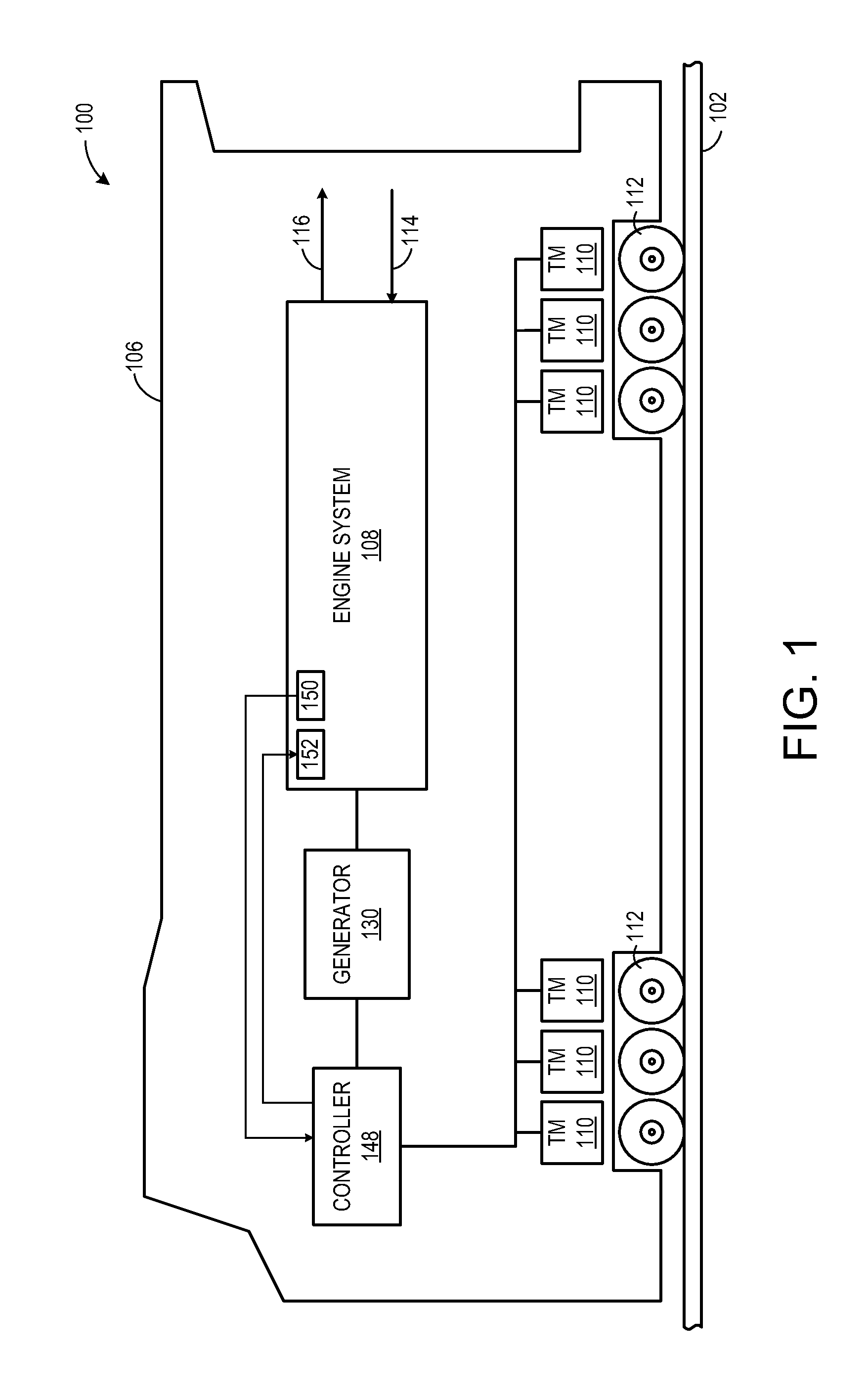Methods and systems for controlling transient engine response
a transient engine and response technology, applied in the direction of machines/engines, mechanical equipment, transportation and packaging, etc., can solve the problems of increasing the time for the engine to respond to the changing conditions, reducing the speed of the engine, and reducing the efficiency of the engine operation. , to achieve the effect of improving the transient response of the engine, reducing the time, and reducing the tim
- Summary
- Abstract
- Description
- Claims
- Application Information
AI Technical Summary
Benefits of technology
Problems solved by technology
Method used
Image
Examples
Embodiment Construction
[0015]The following description relates to various method and systems for controlling transient engine response. In one example embodiment, a method for operating an internal combustion engine includes, under a first condition, charging a compressed air storage vessel via a compressor. The method further includes, under a second condition, directly injecting compressed air from the storage vessel to a cylinder of the engine to enhance fuel combustion. Under a third condition, the method includes ceasing the injection of compressed air from the storage vessel. In such a configuration, as will be described in detail below, the response of the engine during transient conditions may be improved. For example, because the compressed air is directly injected to the cylinder from the storage vessel, a time for the cylinder to receive the air is relatively short resulting in a fast engine response and less time in which an air-fuel ratio of the engine may decrease below a threshold air-fuel ...
PUM
 Login to View More
Login to View More Abstract
Description
Claims
Application Information
 Login to View More
Login to View More - R&D
- Intellectual Property
- Life Sciences
- Materials
- Tech Scout
- Unparalleled Data Quality
- Higher Quality Content
- 60% Fewer Hallucinations
Browse by: Latest US Patents, China's latest patents, Technical Efficacy Thesaurus, Application Domain, Technology Topic, Popular Technical Reports.
© 2025 PatSnap. All rights reserved.Legal|Privacy policy|Modern Slavery Act Transparency Statement|Sitemap|About US| Contact US: help@patsnap.com



